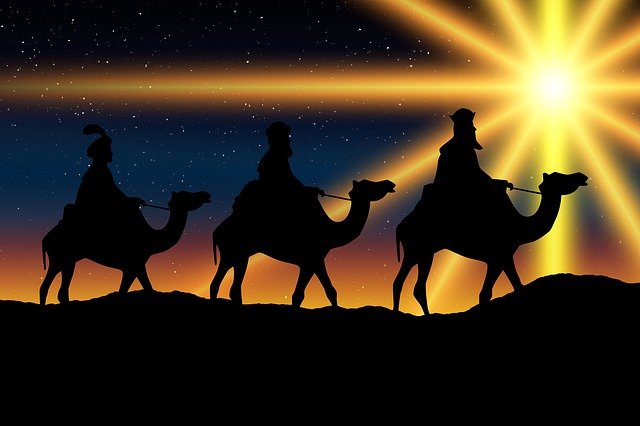 Is the Star of Bethlehem that appeared in the sky last night the same star that guided the Wise Men to Jesus more than two thousand years ago? And if so, why can’t we use the stars to guide us in life, just like the Wise Men?
Is the Star of Bethlehem that appeared in the sky last night the same star that guided the Wise Men to Jesus more than two thousand years ago? And if so, why can’t we use the stars to guide us in life, just like the Wise Men?According to the Independent, the “star” that was so brightly visible in the sky last night is not a star at all but a conjunction of two of the largest planets in our solar system – Jupiter and Saturn. Known as a “great conjunction,” these two planets appear to line up every twenty years, but this year’s conjunction is different because it’s the closest the two planets have come since 1623. And it’s the closest observable conjunction since 1226. These two planets won’t line up this closely again until March 15 of 2080.
What’s the connection between this event and the Star of Bethlehem that we read about in the bible? Astronomers believe a similar and equally rare event occurred around the year 7 B.C. which places it very near to the time of Christ’s birth. Because of the brilliance of this conjunction, it may have been the “star” that led the Wise Men to Jesus.
However, astronomers say there were other astronomical events that occurred at the time of Christ’s birth that may also have been mistaken for a “star.” As Live Science reports, in 3 B.C. Jupiter and Venus came just as close as this year’s Jupiter-Saturn conjunction, and Venus usually looks much brighter in the sky. These two planets appeared to “merge into a single star” in June of 2 B.C.
Chinese astrologers also note that a “broom star” appeared in the sky around 5 B.C., which was likely a comet but could have been mistaken for a star.
Regardless of what the “star” actually was that led the Wise Men to Jesus, why does the Catholic Church condemn astrology if the Magi, who were known as “astrologers,” were so obviously using the stars to guide them?
This might seem like a blatant contradiction, but it’s not. Before the 17th century, astrology and astronomy were essentially the same pursuit. The stars were being used both observationally (for navigation) as well as for divination purposes (horoscopes).
This didn’t change until the advent of telescopic discoveries such as those by the Italian astronomer Galileo Galilei (1564-1642). When he and others found evidence of other celestial bodies that were not represented in astrological predictions, it began to cast doubt on the validity of astrology.
These doubts intensified with the advent of the printing press and the popularity of farmer’s almanacs that were based in astrology. When these published predictions failed, they did so in full view of the public.
Meanwhile, science continued to advance far beyond the realm of astrology and the two finally parted ways. Today, astronomy is based in the scientific understanding of the universe while astrology remains the stuff of tabloid prophecy.
The bottom line is that according to Matthew 2:2, the magi “saw his star at its rising” and followed it which means they were using it for navigation purposes in order to find their way to the Christ Child. This would indicate that the magi were not using the kind of astrology based in divination that the Church condemns, but were using it in a way that would later become known as astronomy.
Finally, it would not be plausible to assert that the Catholic Church would permit the use of any divination tool – be it astrology or conjuring spirits or reading omens – because attempts to divine the future are expressly condemned dating back to the earliest books in the bible, including Deuteronomy (18:9-14); Leviticus (19:26-31; 20: 6-27); and Isaiah (8:19; 47:13-14).
© All Rights Reserved, Living His Life Abundantly®/Women of Grace® http://www.womenofgrace.com
